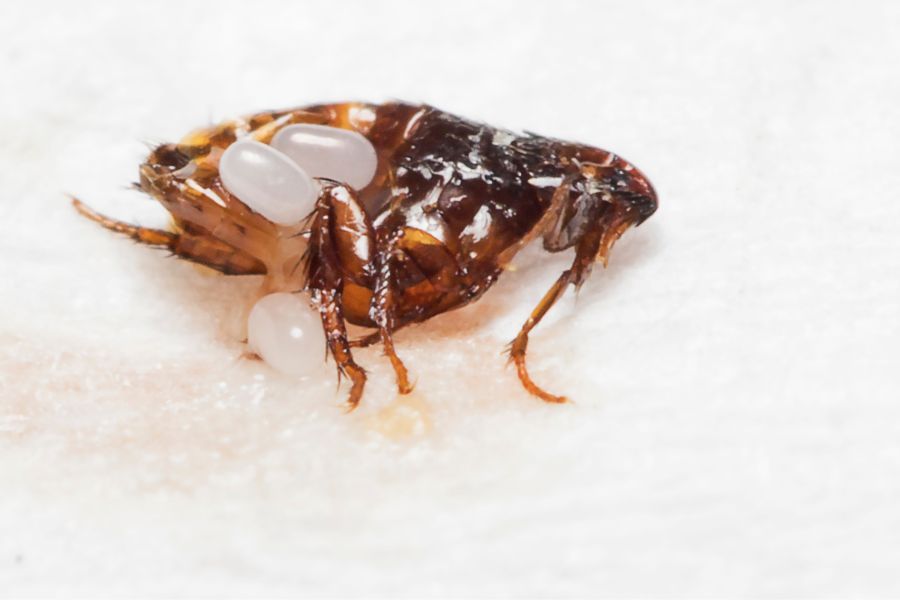Did you know that fleas can lay up to 50 eggs a day? Flea eggs are very hard to see, especially when in your pet’s environment. Flea eggs can also be very sticky, so they tend to stick to fibers like carpet and bedding. A female flea will lay eggs 24-36 hours after she has had her 1st blood meal. Over 50% of fleas will feed on your pet about 5 minutes after they have jumped on them, and 100% of them will be full of blood after an hour of being on your pet.
Temperature and humidity have a lot to do with how quickly a flea egg will hatch. In humid and hot temperatures, about 50% of the flea eggs may hatch in about 36 hours. In cooler temperatures, flea eggs will take days to hatch. Many flea eggs can lay dormant for weeks to months. As soon as the hot, humid weather arrives, the hatching will increase. In areas like Southern California, it is recommended to do year-round flea preventative since the weather tends to be perfect for fleas and their eggs. Once hatched, many fleas in humid weather may live without a host for about 2 months.
Most pet owners wait until they see their pet scratching before they treat their pet with a flea preventative. By this time, there may already be hundreds of flea eggs in the environment. Fleas and their eggs can get into your pet’s environment without you even realizing it until it is too late. Stray cats or wild animals can drop them in your yard, and your pet can also pick them up on walks, dog parks, and more.
How can you tell if your pet has fleas? There are special combs designed to catch fleas, flea eggs, and flea dirt when you comb your pet. Flea eggs are small and white and almost appear to look like grains of salt. Flea “dirt” can look like black pepper. These dark specks are the flea’s feces from the digested blood. Fleas are small and dark in color and are very active. Anytime you are using a flea comb, realize that if your pet has fleas, the fleas will try to jump out of the comb. Flea combing can give you confirmation of how severe of an infestation your pet has. For example, if you do not see fleas after combing, you can feel better as the likelihood of your pet having a flea problem is low. You should still put your pet on a flea preventative and may opt for a preventative that focuses on controlling the flea eggs. If you see fleas, flea dirt, and flea eggs, the likelihood is high that there is a flea problem. We recommend treating your pet with a topical or oral flea preventative right away. Washing your pet and their bedding will also be helpful. Treating your pet’s indoor and outdoor environment with an area flea spray can also be very beneficial in getting better control of the flea problem.
If you need help with flea control, we are here for you. We carry the best in oral and topical preventatives in the clinic and on our online pharmacy.

